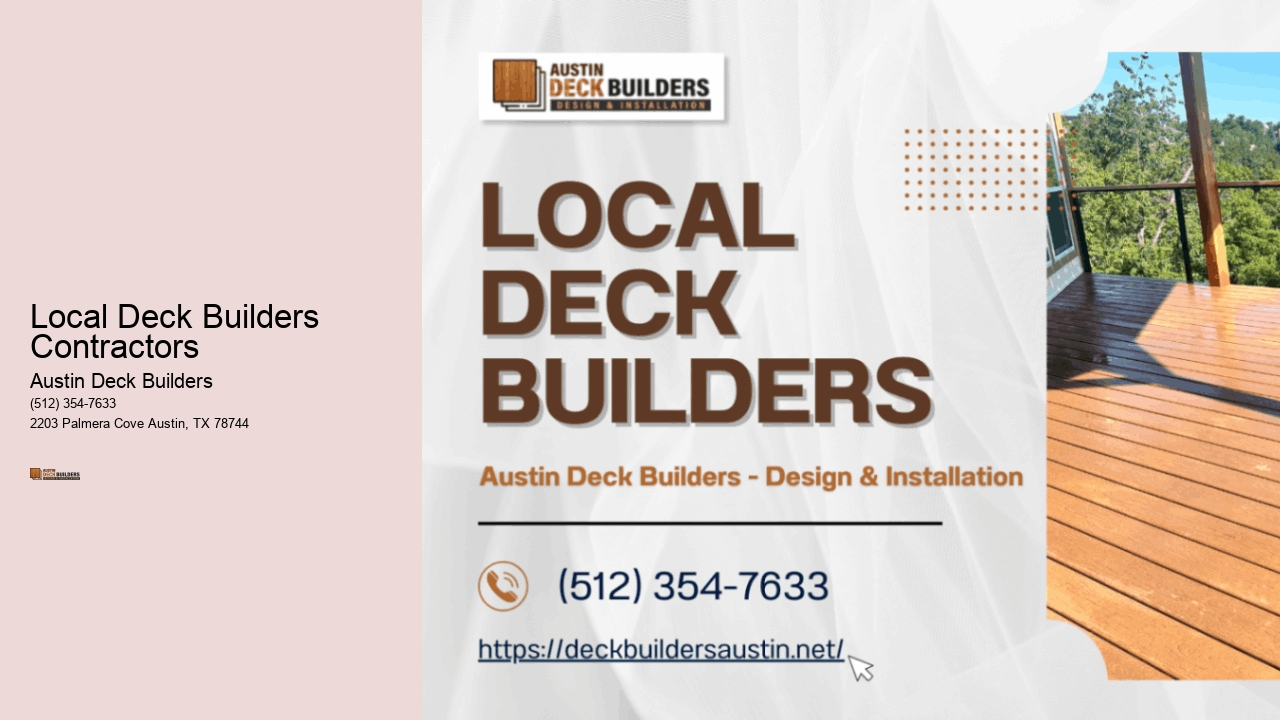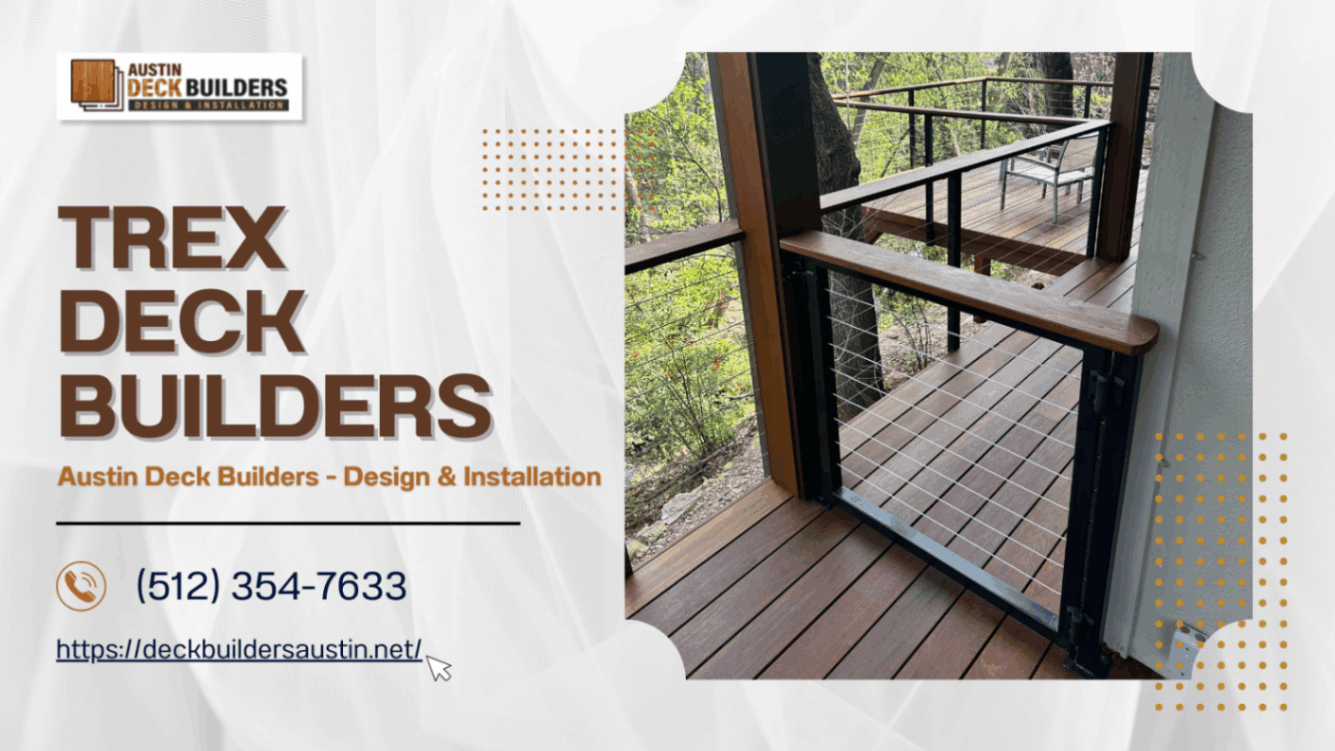

| Entity | Definition |
|---|---|
| Multi-Level Decks | Decks designed with multiple connected levels for larger outdoor spaces or sloped yards. |
| Wraparound Decks | Decks that extend around multiple sides of a home, providing expansive outdoor living space. |
| Detached Decks | Standalone decks not attached to the home, often used for garden or poolside settings. |
| Covered Decks | Decks built with overhead protection like roofs or pergolas to provide shade and shelter. |
| Deck Expansion | The process of enlarging an existing deck to accommodate more space or features. |
Austin Deck Builders – Outdoor Spaces Designed for Real Life
A great deck starts with great design—and Austin Deck Builders is here to make sure your outdoor space works beautifully for everyday life. From sunrise coffee spots to sunset dinners with friends, we create decks that serve as functional extensions of your home, thoughtfully built for the way you live.
Every project starts with a one-on-one consultation to get a full picture of your goals, needs, and budget. We’ll help you choose the right materials—wood or composite—and design features that bring your vision to life. Built-in benches, lighting, shade options, and multi-tiered layouts are just some of the ways we help personalize your space.
Our skilled builders work with precision and care, using best-in-class construction methods to ensure your deck stands up to time and weather. We’re proud to deliver sturdy, code-compliant decks that are as safe and solid as they are stylish.
We make the process smooth and stress-free. Clear communication, fair pricing, and dependable scheduling are all part of the Austin Deck Builders difference. We treat your home with respect and leave behind nothing but quality work and a clean space.
Let us help you create an outdoor area where you’ll love to spend time. Contact Austin Deck Builders and start designing your perfect backyard today.
Composite decking, a blend of wood fibers and recycled plastics, provides homeowners with a durable solution for their outdoor living spaces. Unlike traditional wood decks that can splinter, warp, and rot over time, composite decks resist the elements effectively, maintaining their integrity and appearance for years to come. This robust construction means less maintenance and repair over the life of the deck—a significant advantage given the exposure to sun, rain, and fluctuating temperatures roofs typically endure.
In an age where environmental consciousness is more than just a trend, choosing materials that have a reduced impact on our planet is paramount. Composite decking steps up to this challenge as it often utilizes recycled materials in its construction. The process of creating composite boards diverts plastics from landfills and prevents the need for harvesting new trees. For modern homes looking to balance aesthetic appeal with ecological responsibility, composite decking offers an ideal compromise.
Modern homes require design flexibility that can complement various architectural styles while providing personalized options for homeowners. Composite decking comes in a wide array of colors and finishes designed to mimic the natural beauty of different woods without the associated upkeep. This versatility allows designers and homeowners alike to create outdoor spaces that seamlessly extend the home's aesthetic onto roof decks or terraces.
While initial costs for installing a composite deck may be higher than those for a traditional wood deck, the long-term savings are clear when factoring in maintenance expenses. Wood decks require regular staining or sealing—a cost both in terms of materials and time—whereas composite decks need only occasional cleaning with soap and water. Additionally, because composite decking does not degrade as quickly as wood does over time, replacement costs are significantly lower, making it a smart investment for modern homes that value both style and sustainability under their roofs.
Embarking on a Do-It-Yourself (DIY) deck installation can be a rewarding challenge for those who are handy and have the necessary tools. The most obvious advantage of going DIY is cost savings; you won't need to pay for labor, which often constitutes a significant portion of deck installation expenses. Additionally, there's the personal satisfaction that comes with completing a home improvement project with your own hands. However, it requires substantial time investment and a certain level of skill to ensure structural integrity and safety. Mistakes made during a DIY project could lead to more costs in the long run due to repairs or even complete rebuilds.
Conversely, hiring professional installers guarantees expertise and experience that will likely result in a higher quality finish and quicker completion time. Professionals are well-versed in local building codes and regulations ensuring that your deck is built legally and safely. They also typically provide warranties for their workmanship, offering peace of mind that isn't available with DIY endeavors. The downside is the higher upfront cost, which includes paying for both materials and skilled labor.
Another consideration when deciding between DIY or professional installation is the availability of tools and materials. A professional contractor will come equipped with all necessary high-quality tools, which might not be readily available to the average homeowner. Moreover, they often have access to wholesale prices for materials through their networks—something that can offset some of the cost of hiring professionals.
Time commitment is another crucial factor. A DIY project can consume many weekends or even longer depending on the complexity of the deck design and your proficiency with construction projects. This could interfere with work or family time, making it less appealing for busy individuals. Professional installation usually means your deck will be completed much faster since it's their primary focus until finished.
Finally, risk management shouldn't be overlooked when choosing between DIY or professional services. Professionals carry insurance to protect against accidents or damage incurred during construction—a safety net that goes missing in personal projects where any mishaps fall squarely on the homeowner’s shoulders. In addition, without proper knowledge or adherence to building standards during a DIY build, there's an increased risk of future structural failures which could have serious implications not only financially but also in terms of safety.
Choosing between installing your own deck or employing professionals depends largely on personal skills, budget constraints, time availability, and appetite for risk-taking versus security-seeking when it comes to home improvements related directly or indirectly to one's roof structure stability over time.

Composite decks are low-maintenance, resistant to rot, insects, and fading, and offer longer lifespans than traditional wood.
For wood decks, inspect annually and perform repairs or staining every 1-3 years. Composite decks only need occasional cleaning.
In most areas, yes permits are required for new construction, major repairs, or structural changes. Your contractor typically handles this.
Remodeling focuses on upgrading style or features (like railings or layouts), while replacement involves removing and rebuilding due to age or damage.